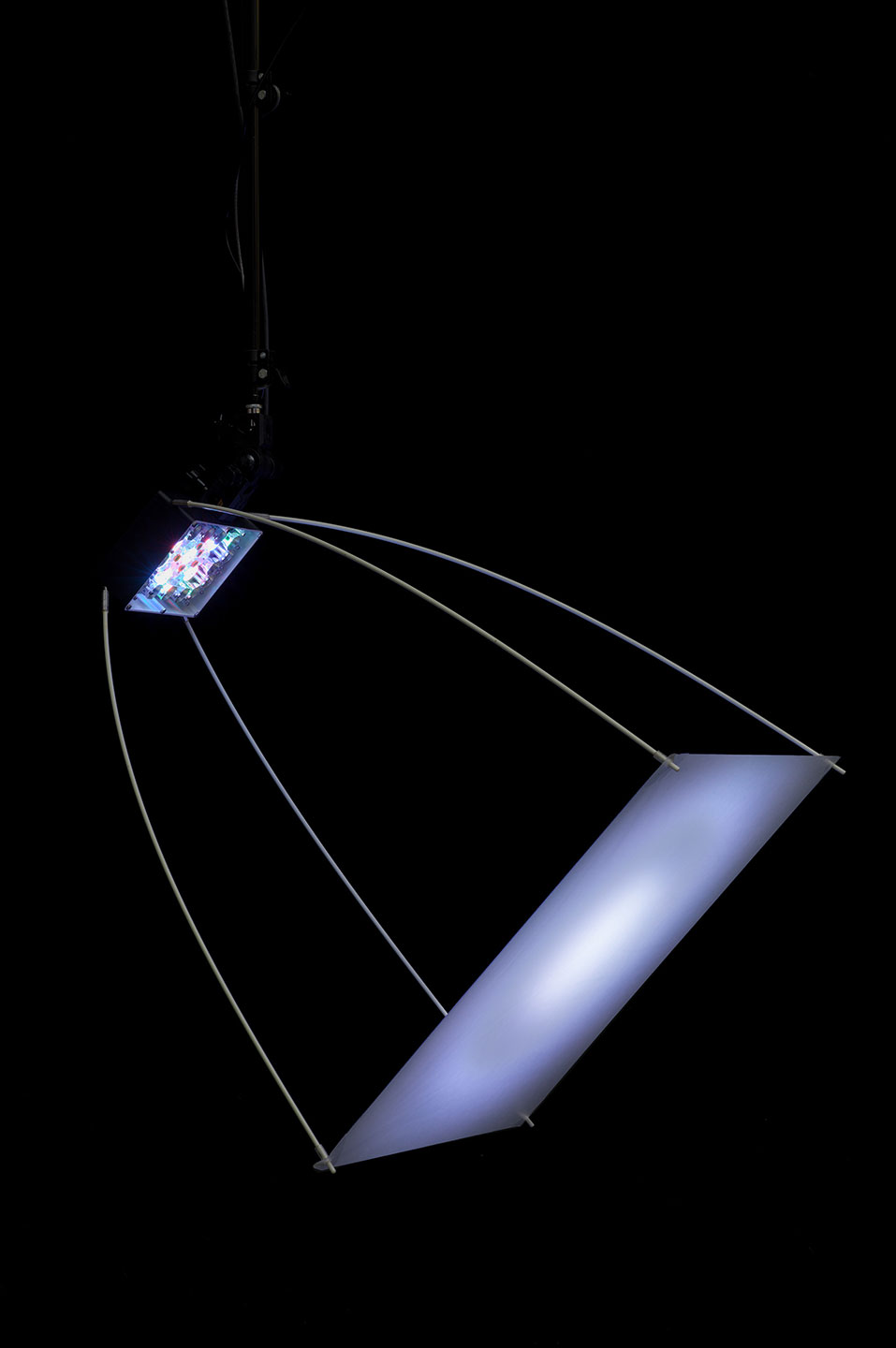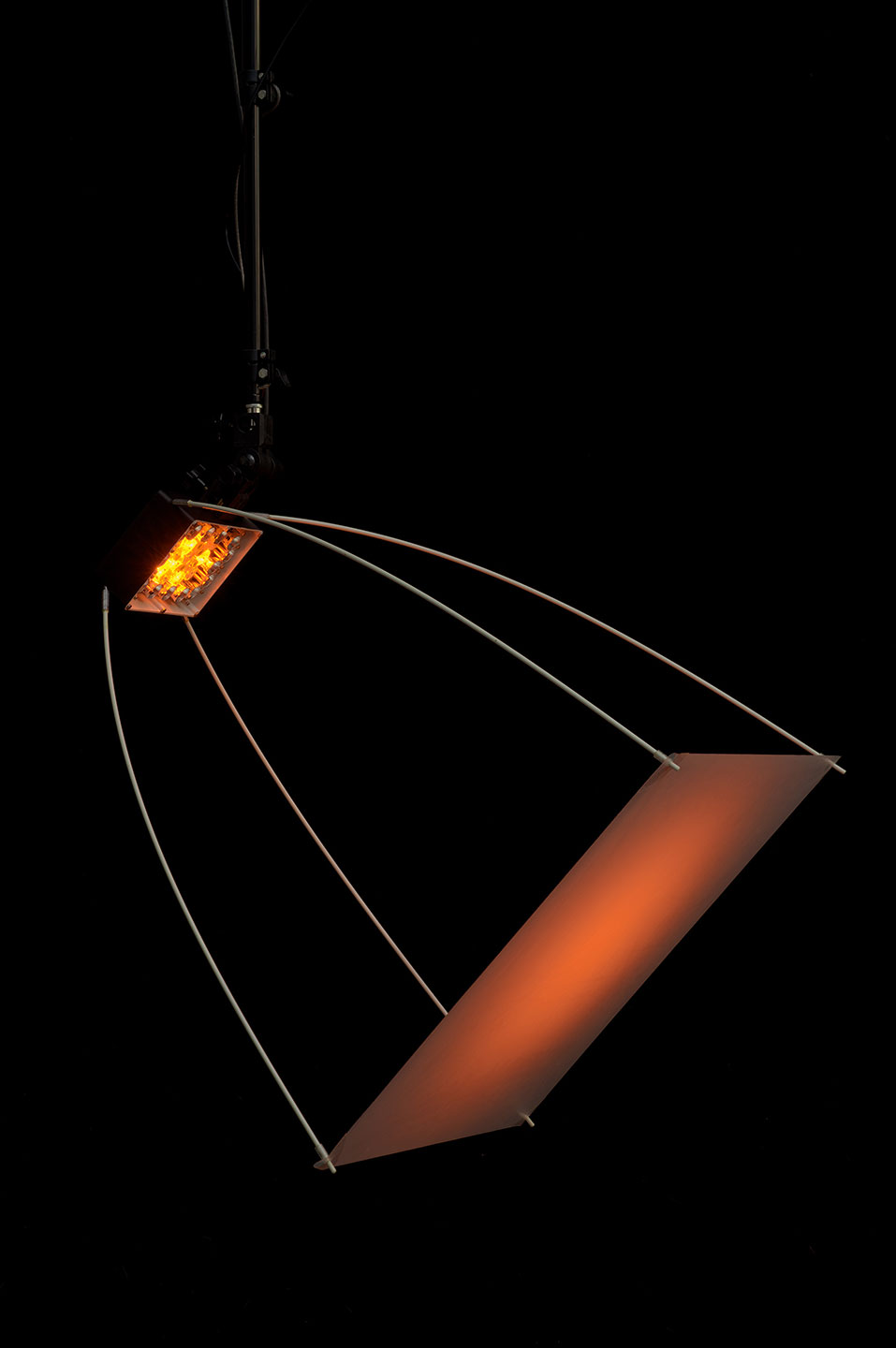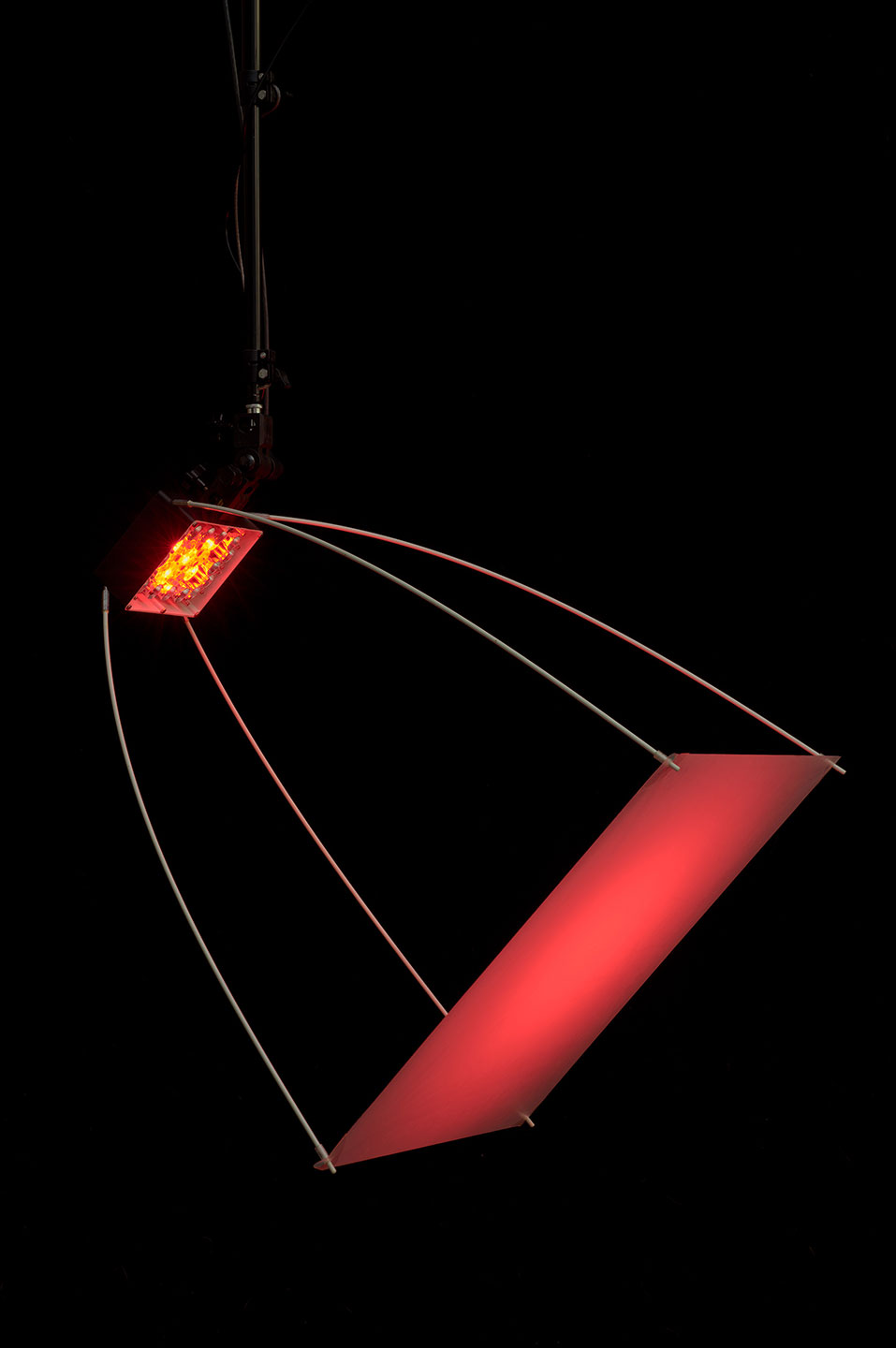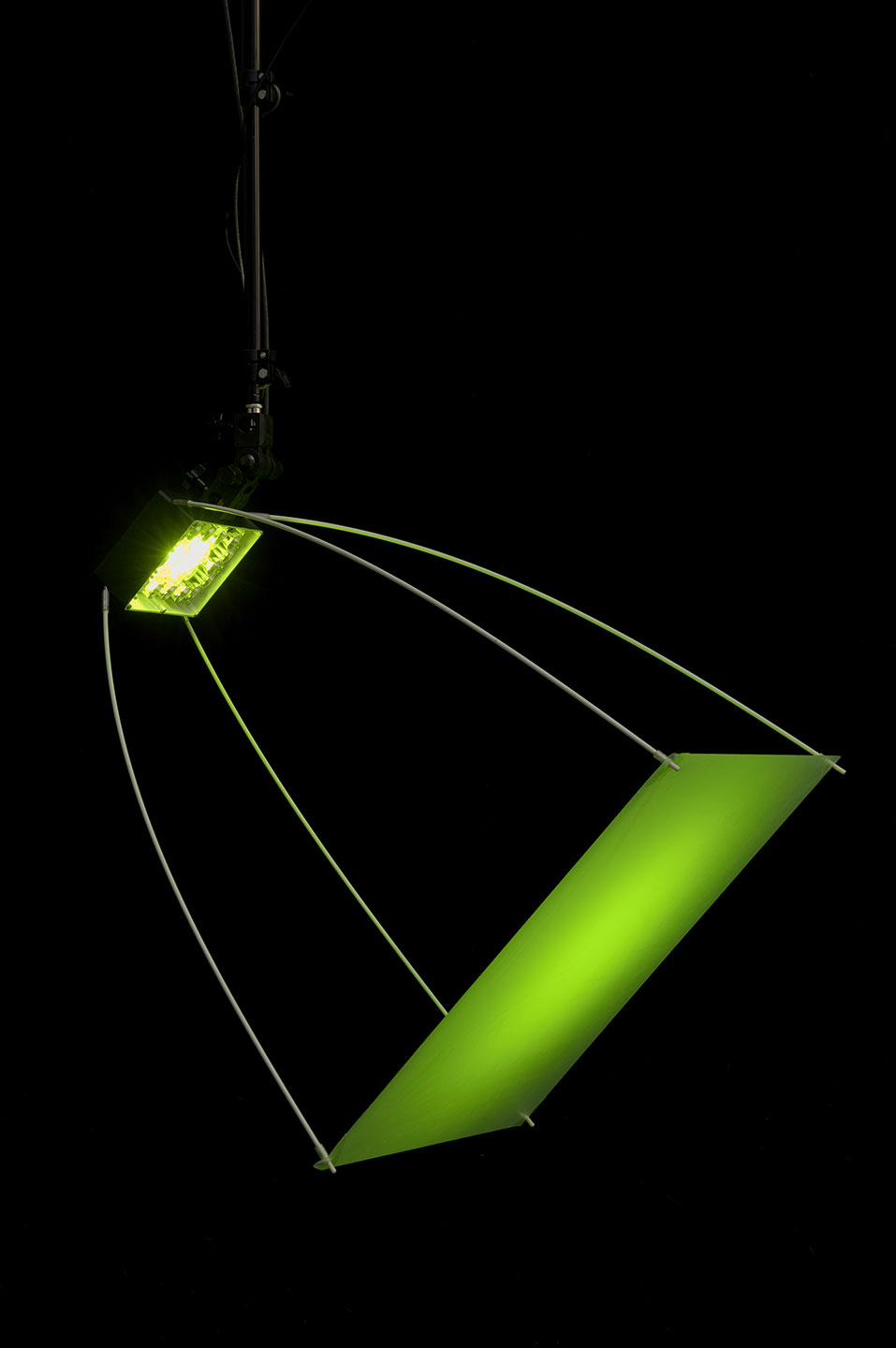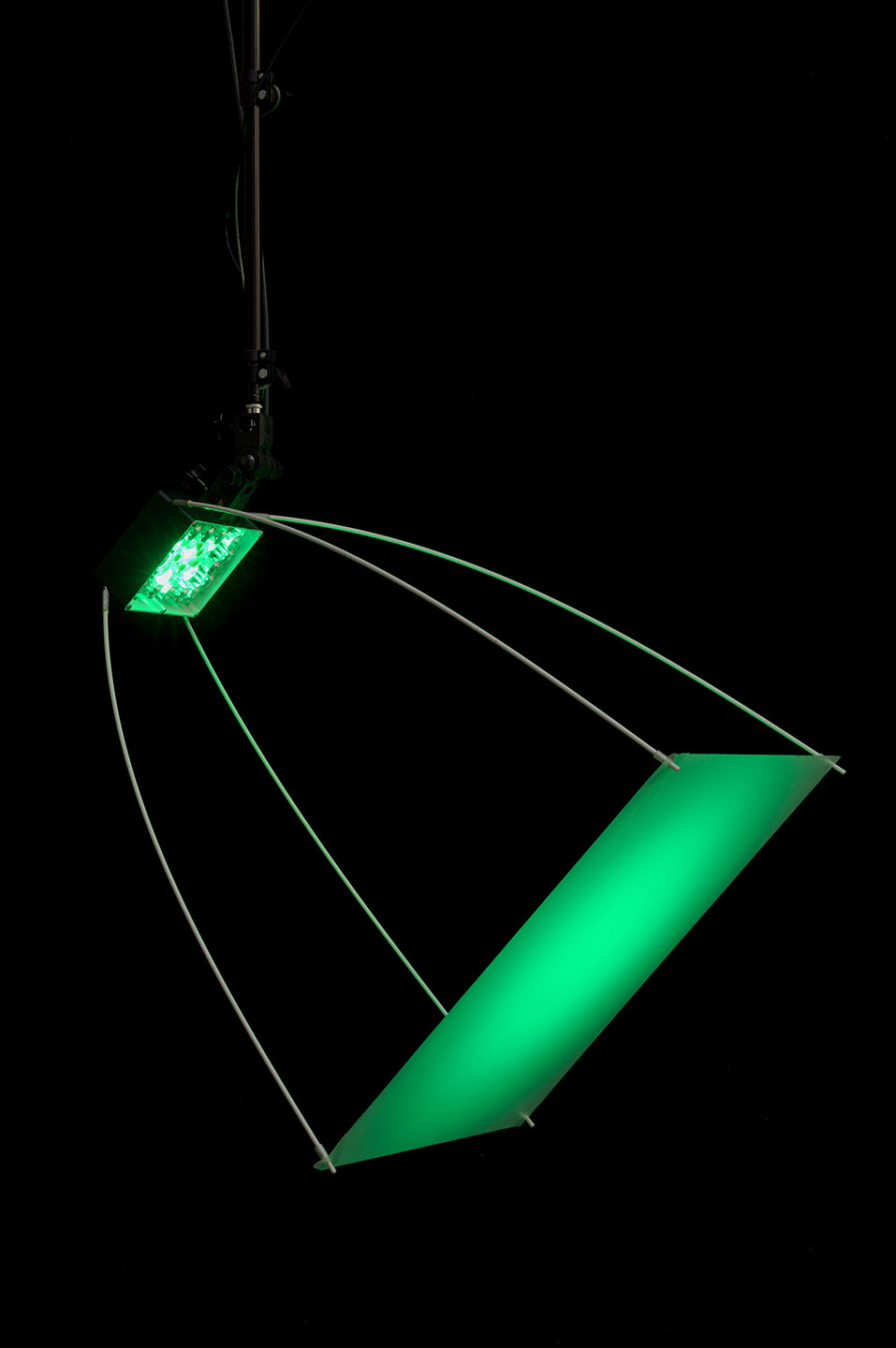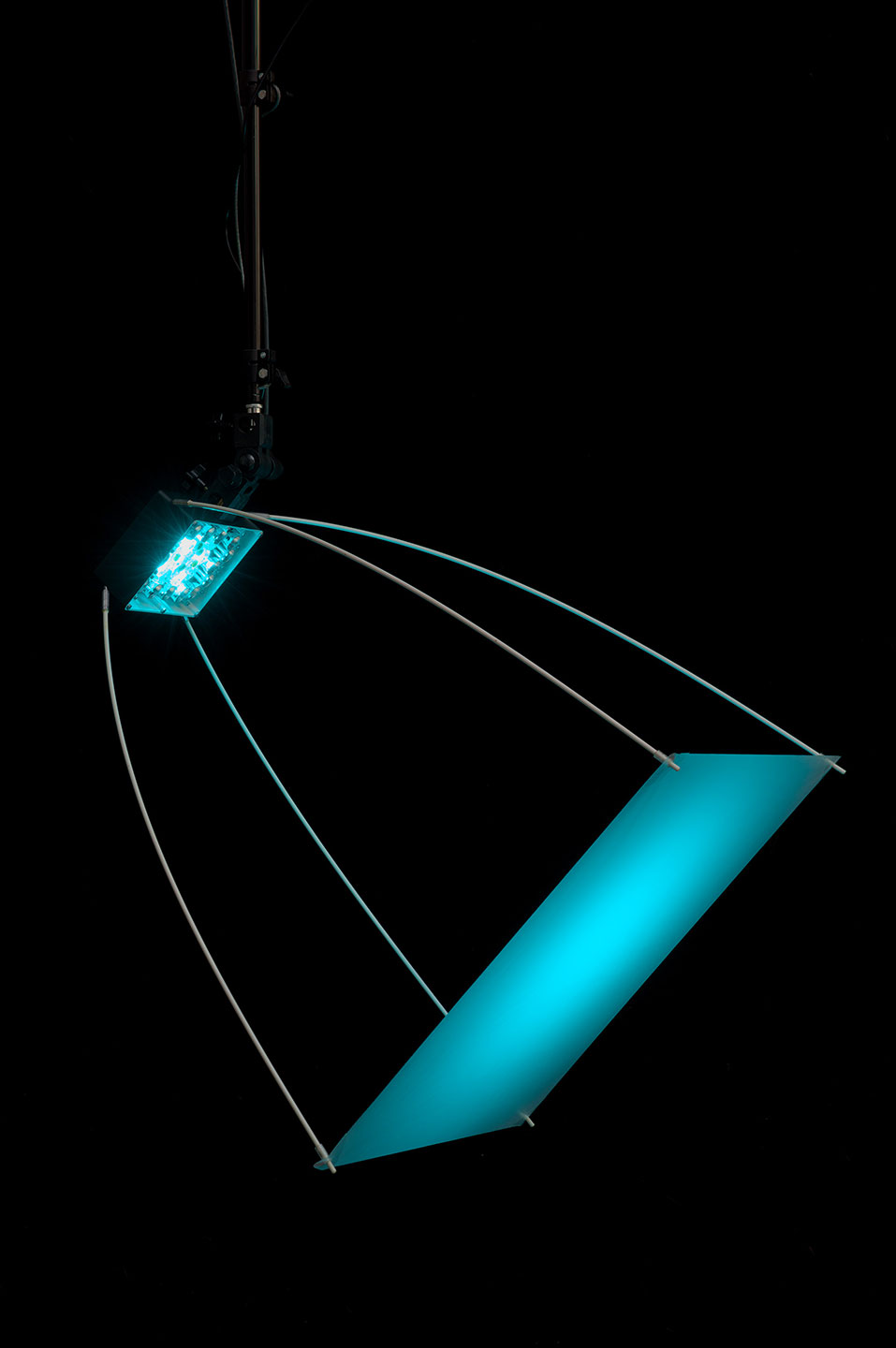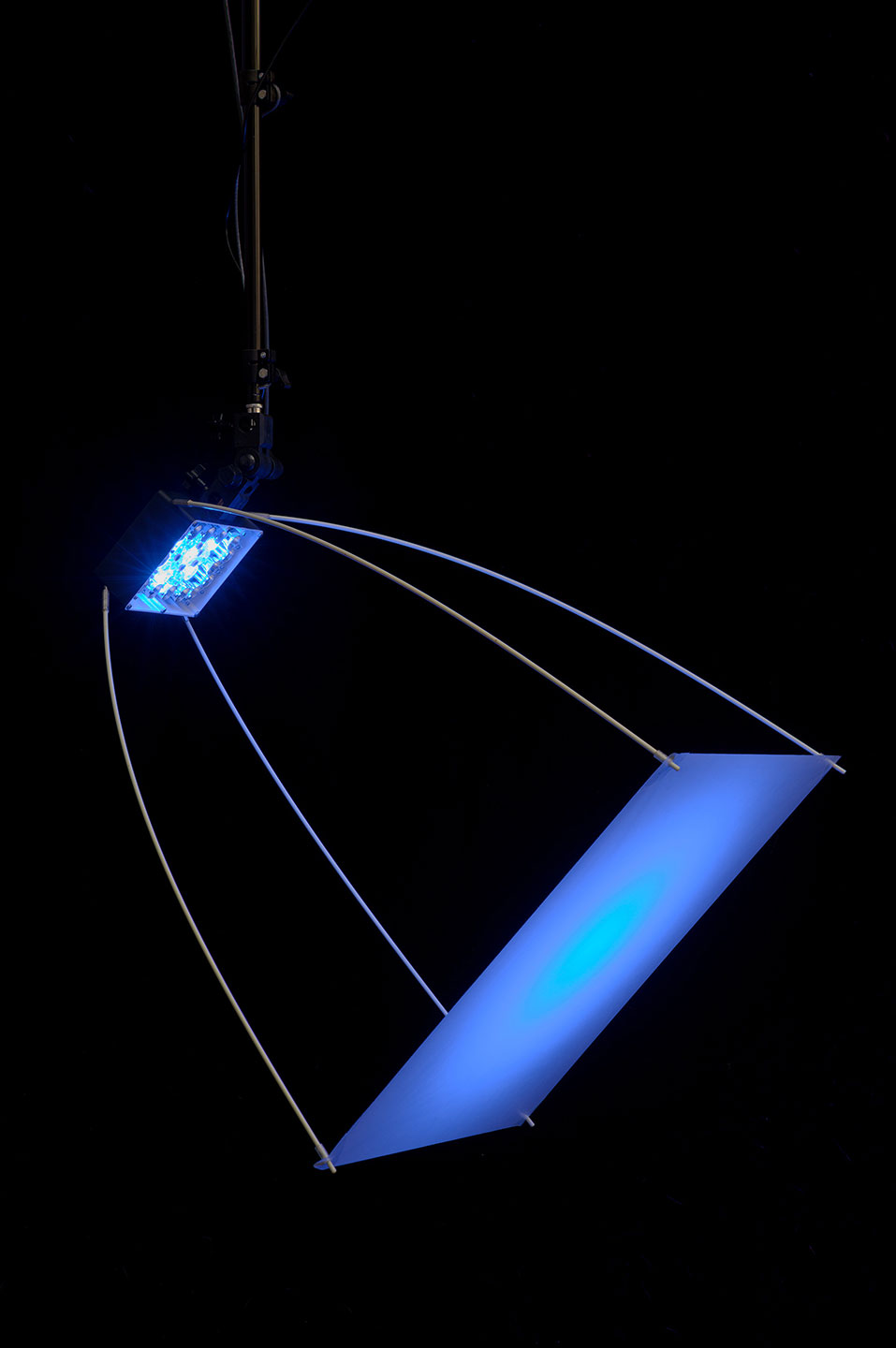Spectra Palette™ Light
MegaVision SpectraPalette™ Light is quite arguably the most sophisticated and controllable studio light ever created. MegaVision SpectraPalette Light (MSL) enables lighting opportunities previously unimaginable. SpectraPalette lighting can produce not only white light at virtually any desired visible color temperature, it can produce narrow bands of saturated colored light and nuanced mixtures of light that open new doors for color accuracy, discovery, monitoring, and creative expression.
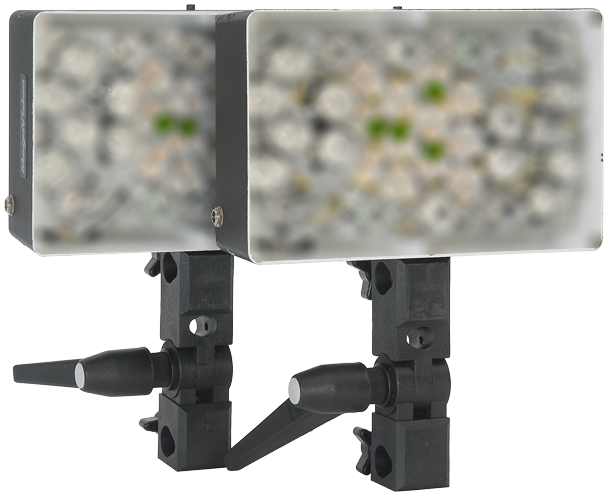
MegaVision SpectraPalette Light (MSL), uses up to 10 discreet visible colors to provide unmatched spectral continuity and CRIs well above 95
MSL light Heads are available in 2 standard sizes:
1. Single: 19cm X 12cm X 5.2cm (7.4” X 4.7” X 2.0”)
2. Dual: 19cm X 24cm X 6.5cm (7.4” X 9.4” X 2.0”)
MSL is a multi-spectral, high-power, LED based lighting system that can be computer controlled and produces light in virtually any combination of 7 or more narrow light bands that that span, and optionally exceed, the visible spectrum.
Unlike most LED white light sources which depend on phosphors to convert blue light to white light, MSL produces white light by mixing light colors in precise ratios. Eliminating the phosphors eliminates the spectral spikes and variations due to the non-ideal properties of even the best phosphors.
| Bands (Standard bands selectable in various combinations) | Visible 420, 450, 470, 505, 530, 560, 590, 615, 630, 655 nm UV 365, 385, 400 nm Infrared 700, 730, 780, 850, 860, 940, 1050 nm Many other optional wavebands are possible. Please inquire with factory. |
| Size | Single Head 19cm X 12cm X 5.2cm (7.4” X 4.7” X 2.0”) Double Head 19cm X 24cm X 5.2cm (7.4” X 9.4” X 2.0”) |
| Computer Interface | USB – Win7/Win10 |
| Power | 110-220 V, 50-60 Hz 60-120 watts, depending on options Power Supply/Hub 19cm X 12cm X 7.6cm (7.4” X 4.7” X 3.0”) |
| Weight | Single Head 0.74 Kg (26 oz) Double head 1.5 Kg (53 oz) depending on options Power Supply/Hub 1.3 Kg (45 oz) |
Most studio LED light sources use low power LEDs distributed over a diffuse light panel surface. This limits the panel size and increases the weight for large panels. MSL, on the other hand, uses very high power and tightly clustered LEDs which can be lensed for highly focused beams or diffused using familiar studio diffusion and other light modifiers. LED beam focusing options are available from 12 deg to 50 deg.
MSL computer control enables a range of possibilities. MSL control software includes MegaVision’s unique and powerful N-Shot Table™ The N-Shot Table enables automatic control of light power, exposure, and color for a series of image captures. Multiple images can be captured under different lighting automatically. For example, it is possible to capture under sunlight, 5,000K, and tungsten one after another without changing or moving the lights. With the computer controlling light color, power, and exposure, multiple shot captures under different lighting conditions are made as simple as a single capture.
Automatic multiple-shot captures enables unique possibilities for color capture using monochrome sensors. A reprise of legacy triple-shot color capture is possible using RGB lights (in lieu of RGB filters). But more interestingly, multi-shot capture using up to 10 color bands enables capturing color images of unprecedented color accuracy: 9-band color capture reduces the ΔE by a factor of 4 over the very best RGB color capture (whether single shot or multi shot).
For scientific exploration, MSL can be expanded beyond the visible. UV and IR lights can be added to provide hyperspectral imaging capabilities for scientific, industrial, forensic, medical, and academic imaging.
Lighting Configuration Options
Heads may be configured with varying combinations of visible, UV, and/or IR. Single heads may be joined together to create dual head units.
Advantages of MS LED illumination
- MS LED’s provide highly specific, low maintenance, and very repeatable light. Spectral properties are consistent from shot to shot and year to year. Lumens/watt is stable, and much better than strobe, incandescent, HMI, or fluorescent.
- Normal lifetimes exceed 50,000 hours for visible band LEDs and 10,000 hours for IR and UV LEDs.
- Rapid switching times (< 50 µSec) allow pulse-width modulation and precise exposure durations.
- High efficiency reduces heat and stress on the objects in the scene.
- Elimination of unwanted IR wavelengths prevents registration difficulties caused by object motion due to heating during long exposures.
- Because narrow-band LED’s emit no light outside the specified band, there is no need to filter IR light from the sensor. The IR cutting filter can be eliminated. Eliminating the IR filter removes an optical element from the image forming path and substantially increases light efficiency, enabling reduced exposure and greater S/N.
When using a monochrome sensor and narrow band illumination, the light is utilized more efficiently than white light. Ordinary color photography which employs broad- band white light uses great deal of unnecessary light energy. The majority of the light energy in white light is discarded by normal color camera filtration after the light has interacted with the objects in the scene. White light must be filtered at the camera after the scene is subjected to unnecessary light energy. With narrow band LED illumination, no filtration is required. The light energy is used more efficiently, and only enough light to properly expose the objects in the spectral band of interest is generated. Unused light energy is eliminated before it is created at the source of the light, rather than after the light hits the object in the scene. This means that the object is subject to less light stress, and the lighting system requires dramatically less power.
Color Capture With a Monochrome Sensor and LED Illumination
While the human color vision system is functionally tri-stimulus, our retinal spectral response curves can’t be replicated by a simple set of 3 band-pass filters. Nearly all color cameras rely on 3 band-pass filters, typically red, green, and blue. An average color accuracy of ΔE=3 over a broad range of colors (such as are found on an X-rite ColorChecker Color Target) is considered superb for 3-color cameras, and is very difficult to improve.
Somewhere in the range of 6-10 bands are required to acquire enough spectral information to make a good match to human vision. Attempts to make practical systems utilizing multiple band capture with color filters between the scene and the sensor have proved problematic for a number reasons. By coming at the problem from a different direction, namely, creating the color bands at the source of the light (using LED’s), the MSL solves the difficult practical problems of multiple filters. Capturing sufficient perfectly registered and highly repeatable spectral bands is an enabling technology for deploying semi-automated, high-quality color reproduction. With tri-stimulus capture, color matching over a practical range of commonly encountered dyes, pigments, plastics, and other materials is sufficiently poor that individual, scene-specific, localized color adjustments must be performed to obtain the
desired accuracy. This color-matching step is sufficiently time consuming and costly that it is practical to create high-quality color reproductions of only the most expensive originals.
The MSL approach can dramatically reduce the amount of labor-intensive postprocessing of the image data and provide highly accurate color reproduction of a very wide range of difficult subjects. Using Megavision’s patent pending process, the average color error of a 10-spectral-band color image over the range of ColorChecker colors is below the discrimination threshold of human vision: ΔE < 0.8 .
A single small head may be joined as a secondary unit to another single small head thereby creating a single double size head. When joined as a secondary unit, the small head does not require a separate cable or hub port for operation.
The heads are powered and controlled via a power pack and integrated hub. Up to 4 heads may be powered from a single power pack. The standard pack maximum power is 60 watts. An option to double the power to 120 watts is available for heavy loads. A single USB cable from the power pack to the computer enables PhotoShoot control software to control multiple heads. PhotoShoot can simultaneously control up to 16 individual heads (through multiple packs) and up to 32 individual bands per head.
Heads are available with no lenses or a range of lens options, such as 50° lenses for a wide beam, and lenses for a narrow beam. Lenses are interchangeable to satisfy a range of directional light requirements.
Various diffusion options in different sizes are available. The heads eliminate the need for a soft box mounting speed ring, as the soft box strut mounting holes are integrated into the head housing. Standard diffusers are crafted to allow the use of hyperspectral as well as visible light. Since lights may be lensed, it is practical to eliminate the softbox sides and attach the diffusion material directly to the flexible fiberglass struts. This eliminates weight and increases light use efficiency.
Who is it for?
Anyone interested in highly accurate, highly repeatable lighting. Individuals and institutions responsible for color reproduction, conservation, and preservation such as conservationists, archivists, museums, libraries and color reproduction services will find considerable use. The hyperspectral light bands enable use in many discovery applications. For example, scholars wishing to discover hidden texts in ancient palimpsests and forensic examiners seeking latent prints, forgeries and other criminal evidence will both find great benefit in MSL technology
